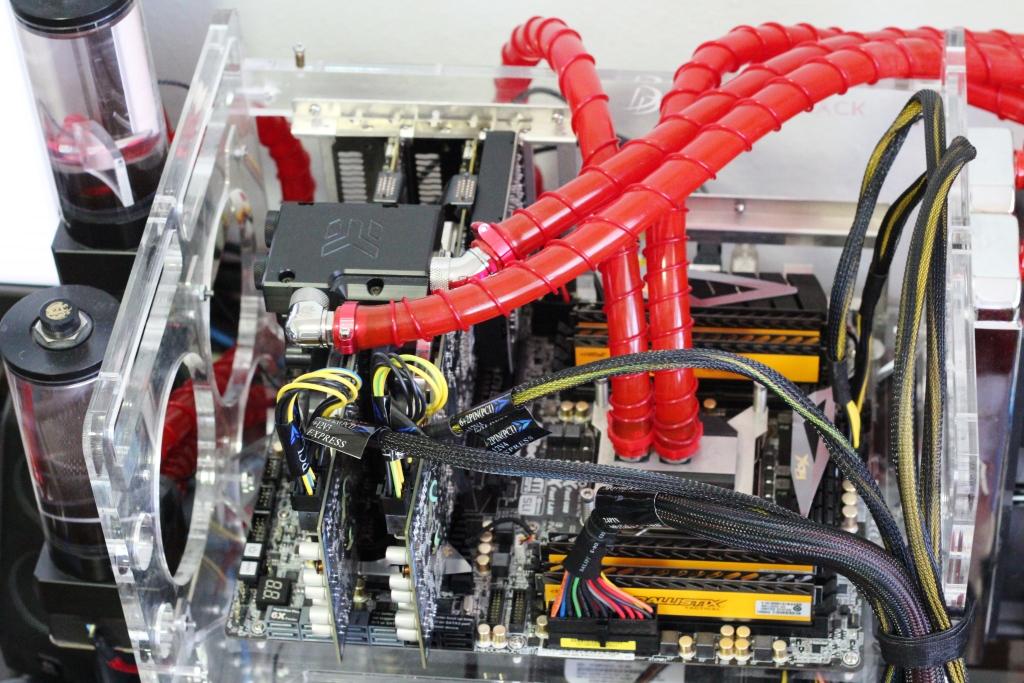TESTING METHODOLOGY
 Our complete testing methodology is fully detailed in our Solid State Storage Enterprise Test Protocol. We utilize the X79 Patsburg chipset in tandem with a LSI 9211-8i RAID controller card under the Windows Server 2008 R2 operating system.
Our complete testing methodology is fully detailed in our Solid State Storage Enterprise Test Protocol. We utilize the X79 Patsburg chipset in tandem with a LSI 9211-8i RAID controller card under the Windows Server 2008 R2 operating system.
The LSI 9211 allows us a stable platform that is relatively free from wild driver changes that motherboard chipsets are subjected to.
DIRECT ATTACH
Utilizing software such as Iometer allows us the flexibility of testing these drives with direct attachment to the HBA, and a minimum of host processing limitations. This will eliminate all possible slow points and latency constraints that will be introduced into the testing by using network-based systems. In many cases SSS will be tested with extraneous equipment connected, which muddies the water in terms of the base performance of the SSS itself. While performance over networks and with SANs is important, that affects the measurements of the device itself, and shifts the focus from the testing of the SSS at hand to the equipment used around it.
We are focused on providing accurate measurements of the SSS itself, with no interference from performance-bound limitations introduced from other types of software and hardware that can be used. Different software-based approaches can be performance inhibited by many different aspects of the host systems CPU, RAM, and chipset limitations. Frequent driver updates to host operating systems, and the software itself, can introduce performance variability over the course of time. This does not ensure a stable platform that can produce consistent comparative analysis over an extended period of time.
We fell that it is important to measure the device itself, with no possible interference. We utilize several key considerations of the industry-accepted SNIA Specification for our testing. The performance of enterprise SSDs has to be conducted at steady state levels. This can be accomplished only by placing the drive under a very heavy workload over an extended period of time. Simply writing the capacity of the SSD several times will not suffice, as there are many factors that must be taken into consideration when attaining true ‘Steady State’.
‘Steady State’ can vary based upon the workload and the type of data access that is being placed upon the SSD. There is a profound difference between sequential and random data loadings, and also between various read/write mixed percentage workloads. The first requirement is to assure that 2 steps are taken to assure Steady State under very specific circumstances.
PRECONDITIONING
Preconditioning is the process of putting the SSS (Solid State Storage) under different loading scenarios that will facilitate conditions that will place the drive into Steady State. Preconditioning takes place after the SSS has been Secure Erased, and the device is FOB (Fresh Out of Box). There are two steps to Preconditioning;
WORKLOAD INDEPENDENT PRECONDITIONING (WIP)
The first execution of each profile will be logged as FOB (Fresh Out of Box) performance. All QD will be executed for all profiles for 60 Seconds and logged. This will be followed by QD 32 for each profile until Steady State Convergence has been attained.
WORKLOAD BASED PRECONDITIONING (WBP)
Each profile will be executed again, in order, at QD32, until Steady State Convergence is achieved for that respective workload. Once within the Measurement Window, Steady State Performance will be logged following the guidelines above.
OVER PROVISIONING STEADY STATE
As our final round of testing, we will apply 20% over provisioning to the respective device to test performance. Over provisioning (OP) is the practice of leaving large amounts of unformatted spare area on the device to increase performance and endurance under very demanding workloads.
STEADY STATE CONVERGENCE VERIFICATION
After each round of Preconditioning has been accomplished, there must be a logging of performance data to assure that Steady State has been achieved for both. Only after the second round of WBP Steady State Convergence has been achieved, should the measurement of SSD performance begin.
We use all 8 of our IOMeter profiles for both levels of preconditioning, and also for measurement of performance once within the measurement window.
 The SSD Review The Worlds Dedicated SSD Education and Review Resource |
The SSD Review The Worlds Dedicated SSD Education and Review Resource | 

$100 for a 50GB drive is not too shabby IMHO. There are a lot of applications which could use something another rung up the ladder from the Micron M400 at a decent price.
To be quite honest the price of this ssd is simply outstanding for its feature set. I feel that it is underpriced but dont tell Micron 🙂
https://goo.gl/urqzK
Had two fail. 2 out of 2